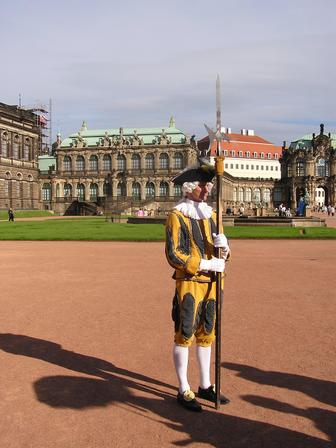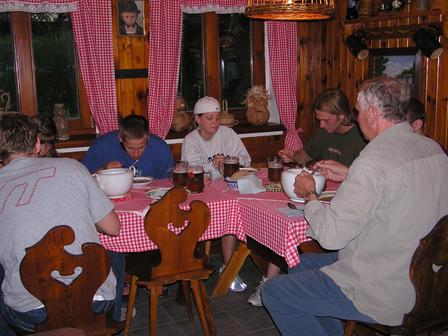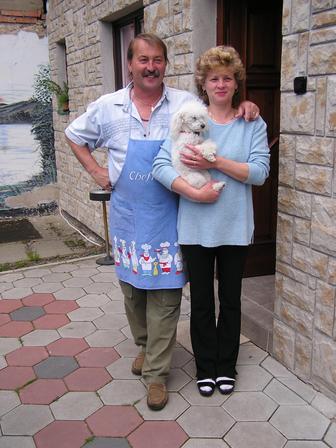Dr Anna and David picked everybody up in Frankfurt (Germany). After the long flight everybody felt pretty lousy in the van, so most people went to sleep quick. Good thing that David was up and running the van with an unbelievable speed (160 km/hour; change it over into miles per hour). Anyhow by 5:30 we arrived to Dresden

http://www.sitesatlas.com/Maps/Maps/511.htm
Dresden
Dresden is slowly regaining the architectural landscape that made it one of Europe's urban treasures. Located along scenic bends of the Elbe River, Dresden's beauty also comes from the surrounding peaceful countryside.
A Short History
of Dresden
Dresden is a city with a thorny past. Monks gave Dresden its start by
establishing a missionary settlement there in the 11th century. Its
medieval beginnings gave way in the 18th century to Baroque masterpieces
that made the city one of the outstanding urban centers of the Age of
Enlightenment. Dresden has long attracted poets, philosophers,
writers and artists including Goethe, Schiller, Wagner,
Schumann and Kleist.
One of Dresden's most fateful moments came on February 13, 1945 when
Allied planes dropped bombs on the city, engulfing the city in
firestorms. Thousands of residents perished, as well as the Baroque
architecture. The GDR government partially restored the historic
buildings but left many to languish. In 1989, residents of Dresden were
the first Germans to dare follow the Polish example of overthrowing
Communist Party rule, thronging the streets in protest. After
reunification, Dresden embarked on a decade of reconstruction, regaining
at least some of its lost luster. Although the rebuilding needs to
continue, Dresden will make a traveler's visit to eastern Germany an
architectural feast.
(http://www.spotlightgermany.com/articles/dresden.htm)
Probably The most interesting in Dresden was the Zwinger, and the part of the old town which has not been renovated after the bombing during the second world war.
| The term "Zwinger" is due to its original location between the outer and inner fortification wall. The Zwinger, which was built in 1709/1732 by Daniel Pöppelmann and the sculptor Balthasar Permoser, is regarded as an outstanding building of baroque festival architecture. Originally planned for tournaments and royal junketings, the complex came along with its different purposes: it was an orangery and was used for festivities and to take precious collections. The open southern front was only filled in 1855 by the museum building by Gottfried Semper, which was designed in italian baroque style. The crown gate with its goldened bonnet ist well known all over the world as one of Dresden's symbols (http://www.virtual-dresden.de/english/index_eng.html). |


Here we are walking into the garden of the Zwinger, where we found dressed up people posing for our cameras.

After our short visit to Dresden, we were ready to rest. We spent the first night in a tiny little Czech village called Ruzomberok, in a bed and breakfast. Our hosts were absolutely fantastic people....The food was great, and we had the chance to taste the KNEDLIKY with cabbage, and pork and also the very famous pilsener.

